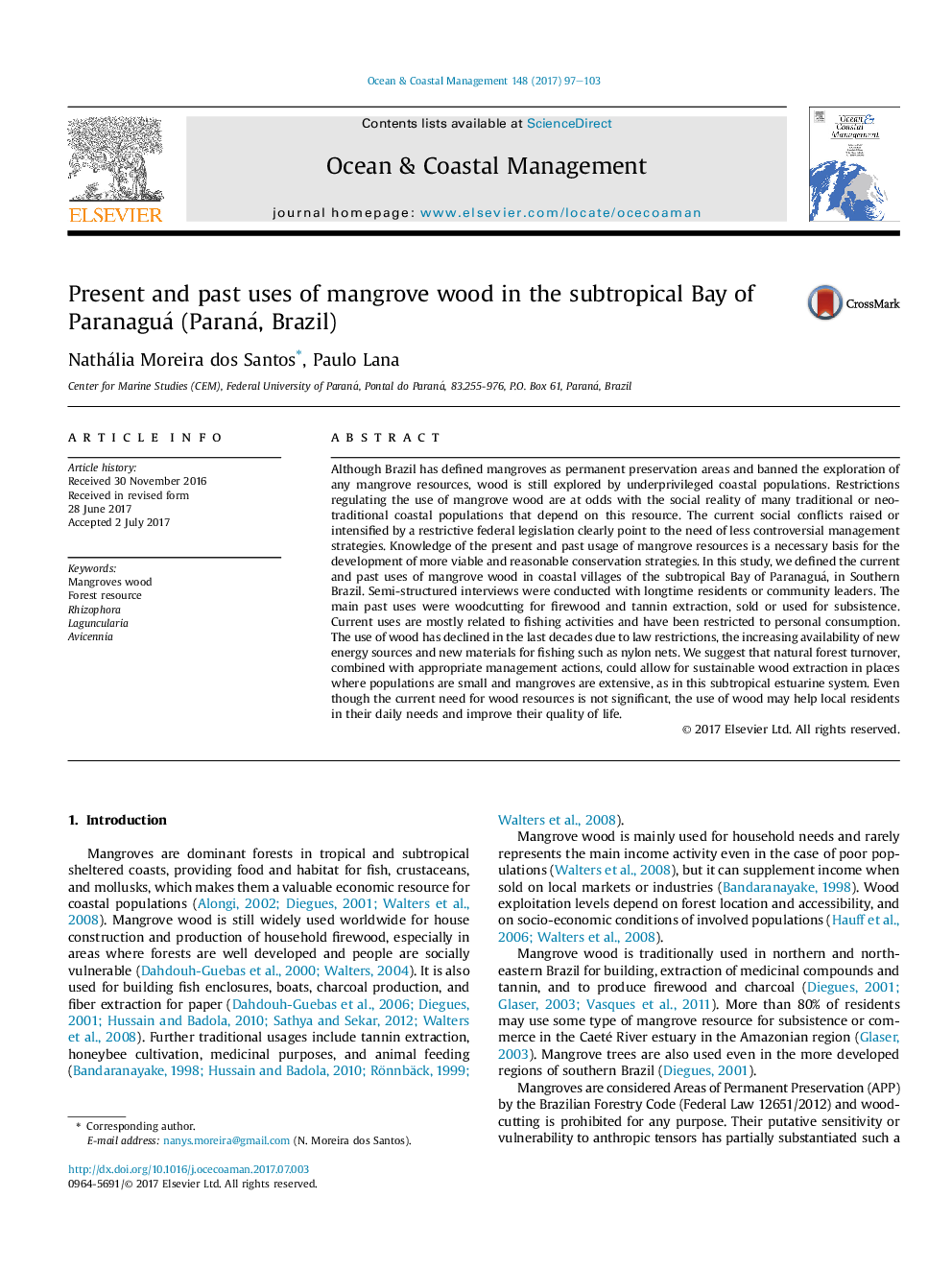| Article ID | Journal | Published Year | Pages | File Type |
|---|---|---|---|---|
| 5473847 | Ocean & Coastal Management | 2017 | 7 Pages |
Abstract
Although Brazil has defined mangroves as permanent preservation areas and banned the exploration of any mangrove resources, wood is still explored by underprivileged coastal populations. Restrictions regulating the use of mangrove wood are at odds with the social reality of many traditional or neo-traditional coastal populations that depend on this resource. The current social conflicts raised or intensified by a restrictive federal legislation clearly point to the need of less controversial management strategies. Knowledge of the present and past usage of mangrove resources is a necessary basis for the development of more viable and reasonable conservation strategies. In this study, we defined the current and past uses of mangrove wood in coastal villages of the subtropical Bay of Paranaguá, in Southern Brazil. Semi-structured interviews were conducted with longtime residents or community leaders. The main past uses were woodcutting for firewood and tannin extraction, sold or used for subsistence. Current uses are mostly related to fishing activities and have been restricted to personal consumption. The use of wood has declined in the last decades due to law restrictions, the increasing availability of new energy sources and new materials for fishing such as nylon nets. We suggest that natural forest turnover, combined with appropriate management actions, could allow for sustainable wood extraction in places where populations are small and mangroves are extensive, as in this subtropical estuarine system. Even though the current need for wood resources is not significant, the use of wood may help local residents in their daily needs and improve their quality of life.
Keywords
Related Topics
Physical Sciences and Engineering
Earth and Planetary Sciences
Oceanography
Authors
Nathália Moreira dos Santos, Paulo Lana,
